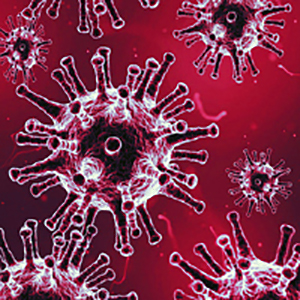The prevalence and clinical spectrum of post-Covid syndrome in patients with rheumatic diseases: a single-center experience

Submitted: 26 January 2022
Accepted: 16 March 2022
Published: 3 May 2022
Accepted: 16 March 2022
Abstract Views: 2157
PDF: 618
Publisher's note
All claims expressed in this article are solely those of the authors and do not necessarily represent those of their affiliated organizations, or those of the publisher, the editors and the reviewers. Any product that may be evaluated in this article or claim that may be made by its manufacturer is not guaranteed or endorsed by the publisher.
All claims expressed in this article are solely those of the authors and do not necessarily represent those of their affiliated organizations, or those of the publisher, the editors and the reviewers. Any product that may be evaluated in this article or claim that may be made by its manufacturer is not guaranteed or endorsed by the publisher.
Similar Articles
- Y. Emad, T. Gheita, H. Darweesh, P. Klooster, R. Gamal, H. Fathi, N. El-Shaarawy, M. Gamil, M. Hawass, R.M. El-Refai, H. Al-Hanafi, S. Abd-Ellatif, A. Ismail, J. Rasker, Antibodies to extractable nuclear antigens (ENAS) in systemic lupus erythematosus patients: correlations with clinical manifestations and disease activity , Reumatismo: Vol. 70 No. 2 (2018)
- G. Filippou, A. Adinolfi, A. Delle Sedie, E. Filippucci, A. Iagnocco, F. Porta, L. M. Sconfienza, S. Tormenta, V. Di Sabatino, V. Picerno, B. Frediani, Radiologists and rheumatologists on performing and reporting shoulder ultrasound: from disagreement to consensus , Reumatismo: Vol. 66 No. 3 (2014)
- M. Rossini, G. D'Avola, M. Muratore, N. Malavolta, F. Silveri, G. Bianchi, B. Frediani, G. Minisola, M. L. Sorgi, M. Varenna, R. Foti, G. Tartarelli, G. Orsolini, S. Adami, Regional differences of vitamin D deficiency in rheumatoid arthritis patients in Italy , Reumatismo: Vol. 65 No. 3 (2013)
- M. Romano, I. Pontikaki, M. Gattinara, I. Ardoino, C. Donati, P. Boracchi, P.L. Meroni, V. Gerloni, Drug survival and reasons for discontinuation of the first course of biological therapy in 301 juvenile idiopathic arthritis patients , Reumatismo: Vol. 65 No. 6 (2013)
- E. Cipriano, F. Ceccarelli, L. Massaro, F. R. Spinelli, C. Alessandri, C. Perricone, G. Valesini, F. Conti, Joint involvement in patients affected by systemic lupus erythematosus: application of the swollen to tender joint count ratio , Reumatismo: Vol. 67 No. 2 (2015)
- M. Rossini, O. Viapiana, M. Vitiello, N. Malavolta, G. La Montagna, S. Maddali Bongi, O. Di Munno, R. Nuti, C.U. Manzini, C. Ferri, L. Bogliolo, A. Mathieu, F. Cantatore, A. Del Puente, M. Muratore, W. Grassi, B. Frediani, G. Saviola, P. Delvino, L. Mirone, G. Ferraccioli, G. Tripi, I. Piazza, D. Gatti, Prevalence and incidence of osteoporotic fractures in patients on long-term glucocorticoid treatment for rheumatic diseases: the Glucocorticoid Induced OsTeoporosis TOol (GIOTTO) study , Reumatismo: Vol. 69 No. 1 (2017)
- J. N. Ablin, V. Aloush, A. Brill, M. Berman, M. Barzilai, D. Caspi, M. Mandelboim, D. Levartovsky, A. Polachek, Y. Wolman, D. Paran, M. Barkagan, O. Elkayam, Influenza vaccination is safe and effective in patients suffering from fibromyalgia syndrome , Reumatismo: Vol. 67 No. 2 (2015)
- A. Notarnicola, G. Lapadula, D. Natuzzi, F. Iannone, Possible interplay between interleukin-15 and interleukin-17 into the pathogenesis of idiopathic inflammatory myopathies , Reumatismo: Vol. 66 No. 3 (2014)
- G. Filippou, V. Picerno, A. Adinolfi, V. Di Sabatino, I. Bertoldi, M. Galeazzi, B. Frediani, Change perspective to increase diagnostic accuracy of ultrasonography in calcium pyrophosphate dihydrate deposition disease! A new approach: the axial scan of the meniscus , Reumatismo: Vol. 66 No. 4 (2014)
- F. Dall'Ara, I. Cavazzana, M. Frassi, M. Taraborelli, M. Fredi, F. Franceschini, L. Andreoli, M. Rossi, C. Cattaneo, A. Tincani, P. Airò, Macrophage activation syndrome in adult systemic lupus erythematosus: report of seven adult cases from a single Italian rheumatology center , Reumatismo: Vol. 70 No. 2 (2018)
You may also start an advanced similarity search for this article.

 https://doi.org/10.4081/reumatismo.2022.1481
https://doi.org/10.4081/reumatismo.2022.1481





